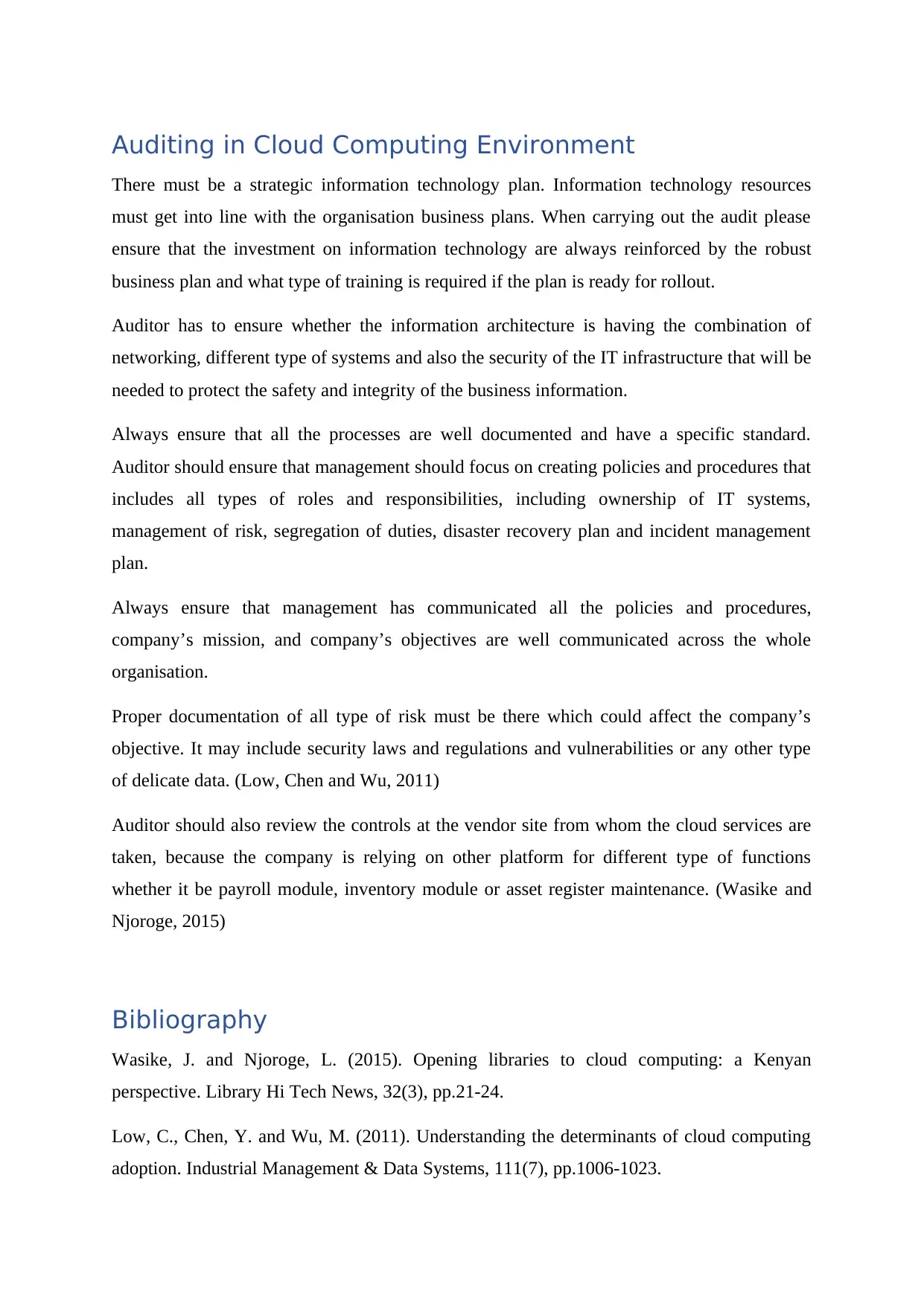Cloud Computing Audit: IT Plan, Risk Assessment, Vendor Review
VerifiedAdded on 2023/03/17
|2
|359
|73
Report
AI Summary
This report provides a comprehensive overview of cloud computing audits, emphasizing the importance of a well-defined IT plan aligned with business objectives. It highlights the need for robust risk assessments, including the identification of vulnerabilities and the development of incident management plans. The report stresses the significance of vendor reviews to ensure the security and reliability of cloud services, especially regarding payroll and inventory management. It also underscores the importance of comprehensive documentation, clear communication of policies, and adherence to relevant regulations. The audit process should cover the IT infrastructure, security, and the roles and responsibilities of all stakeholders involved. The report also references the work of Low, Chen and Wu (2011) and Wasike and Njoroge (2015) to support the findings. The report aims to assist students in understanding the key elements of conducting a cloud computing audit. The report includes details about IT plans, risk assessment, vendor review, documentation and security.
1 out of 2








![[object Object]](/_next/static/media/star-bottom.7253800d.svg)